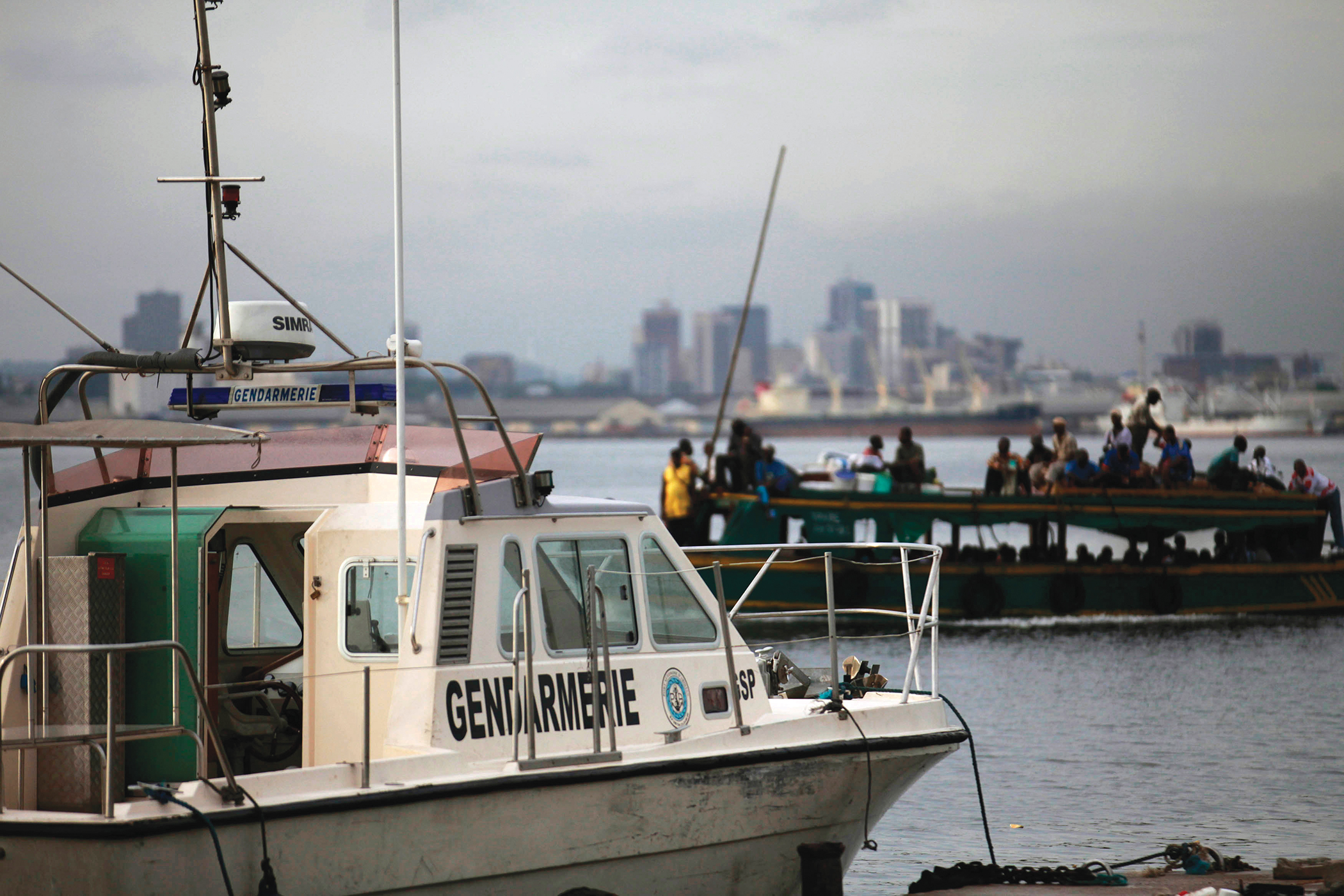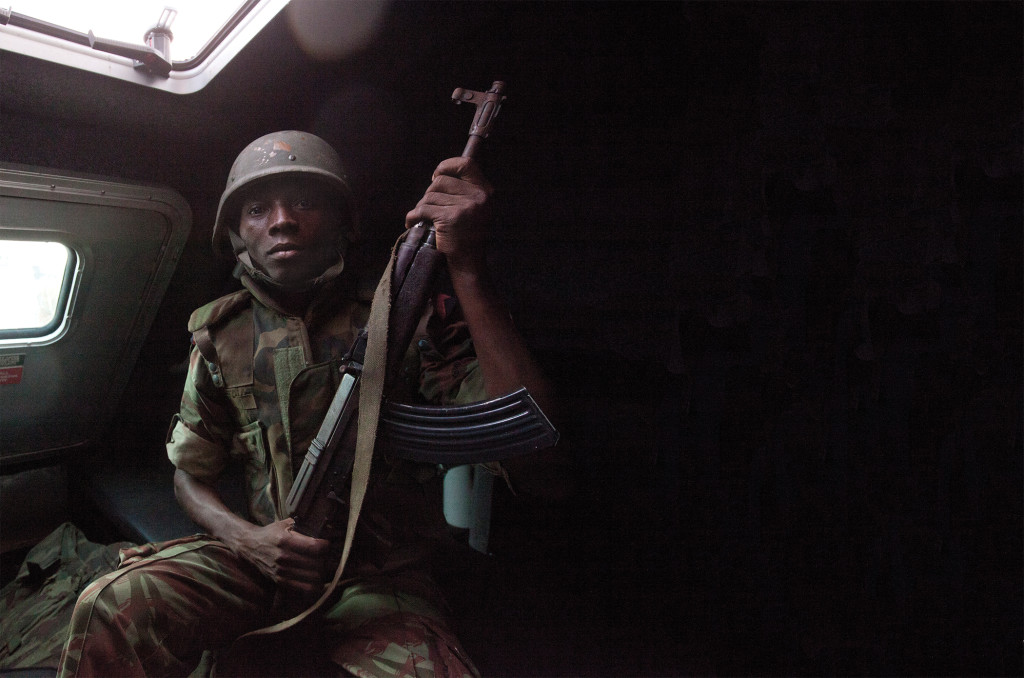When criminals are stopped in the waters of one country, they shift their activities to another
The pirates of the Gulf of Guinea can be an unimpressive-looking group. Although they are hard and muscular, captured pirates often dress like beggars — shoeless and wearing cast-off clothes that seem intended for smaller men. They appear to be the sort of thieves who would steal cellphones and money but little more.
Appearances can be deceiving.
In January 2014, pirates stole a tugboat to use as a mother ship and began a days-long journey to steal the Kerala, a Greek-owned, Liberian-registered oil tanker, off the coast of Angola. Although there were 30 ships in the vicinity, they went straight to the Kerala, which they boarded before disabling its communications and identifications systems. They also painted over its markings, according to a report by the U.S. Naval Institute.
The hijackers sailed the ship north 1,300 nautical miles over the course of more than a week. Their first stop was off the coast of the Democratic Republic of the Congo, where they loaded some fuel oil onto another ship. They sailed to Nigeria for two more ship-to-ship transfers. After selling nearly 15 million liters of diesel fuel, they abandoned the ship off the coast of Nigeria.

Among those believed to be involved in piracy are Nigerian gangs, “insiders” within the oil industry, crooked security workers, and organized criminal networks originating in Eastern Europe and Asia.
KIDNAPPINGS AND RANSOMS
Gulf pirates do not restrict their crimes to oil bunkering. Some are involved in kidnappings and ransoms. In particular, the kidnappers, usually from Nigeria, typically target petroleum industry vessels. After pirates board and ransack a ship, they kidnap the most valuable crew members, often identifying them with information provided by insiders. The pirates then return to their camps to negotiate ransoms.
The Naval Institute reports that ransom negotiations typically take less than a month. Companies usually pay between $50,000 and $100,000 per person, with the largest known ransom being $2 million, supposedly paid in late 2013 for the release of two Americans.
Kidnapping is one of the most profitable forms of piracy, but it is also the most difficult. It requires intelligence gathering, such as locating a specific ship far out at sea. Kidnappers must have heavy weaponry to subdue the ship and overcome rescue attempts. Kidnapping also requires a long-term commitment and shore support to endure often-lengthy negotiations. And it requires money laundering to allow the ransom to be used.
A United Nations report, “Maritime Piracy in the Gulf of Guinea,” concluded that kidnappings in the Gulf of Guinea have been less common than oil theft, with all reported abductions occurring in Nigerian waters. In 2014, the number of pirate attacks in the Gulf of Guinea dropped by 18 percent, according to a report by the shipping information group Dryad Maritime. The vast majority of attacks occurred on the high seas as opposed to close to shore. This is evidence of more sophisticated operators. Also of concern to experts was that pirates were developing networks across borders, with Francophone and Anglophone pirates working together in some instances. Piracy networks appeared to be cultivating certain specialties like ship-to-ship oil bunkering, said Cmdr. Kamal-Deen Ali of the Ghana Navy.
“Despite the fact that we may have had fewer incidents in 2014, there were dynamics that point to the pirates actually entrenching and getting deeper rather than waning away,” Kamal-Deen said. “Significantly, in 2014 for example, we had a major attack in Angolan waters. Prior to that we’ve never had a vessel hijacked in Angolan waters.”
THE WORLD’S PROBLEM
Piracy isn’t just West Africa’s problem. Bunkering and other crimes have ripple effects all over the world. At least 28 organizations have acted to prevent pirate attacks in the Gulf. They include NATO, the United Nations, the World Bank, Interpol, the European Commission and the International Maritime Bureau.
Piracy attacks in the Gulf make up 20 percent of all recorded maritime crimes in the world. The shipping losses have wide-ranging effects, especially on insurance rates. Underwriters have designated the waters off Nigeria, Togo and Benin as a “war risk area,” which drives up insurance costs.
Benin depends on its 121 kilometers of coastline for its livelihood, with taxes on trade amounting to half of its government revenues. Of that, 80 percent comes from the port of Cotonou. The United Nations says piracy attacks in 2011 forced international insurance adjusters to put Benin in the same category as Nigeria. That raised insurance rates and hurt Cotonou’s business. Beninese officials say the port lost 70 percent of its business in the third quarter of 2011. Piracy attacks in Benin have since dropped, but insurance rates remain high.

When waters become too dangerous, private industry tends to steer clear. For example, the Norwegian Shipowners’ Association says the number of times its vessels visited Nigerian ports decreased by 37 percent between 2011 and 2013 because of the threat of attacks, even though port calls to the rest of Africa increased by 20 percent.
The navies and the coast guards of Gulf of Guinea nations are underequipped for extensive patrolling and pursuits, leaving their ports vulnerable. Although nine of the Gulf nations have plans to acquire more, and larger, patrol ships, those plans often are years in the future.
Anchorages and approaches to the ports of Bonny and Lagos in Nigeria, Cotonou in Benin, Lomé in Togo, Tema in Ghana, and Abidjan in Côte d’Ivoire are especially vulnerable to pirate attacks, with large numbers of merchant ships anchored or traveling there.
In Lagos, hundreds of boats and ships linger in the calm water near the ports for days, waiting their turn to anchor in the crowded harbors. A two-hour storm on the Lagos coast in 2010 showed just how vulnerable some of the ports are. In that storm, 25 ships were beached, revealing how many ships were unmanned or unmonitored. Authorities now believe that some of those vessels may have served as pirate hideouts.
ECHOES OF SOMALIA
Comparisons to the infamous Somali pirates are inevitable. The Gulf pirates have adapted some of the Somalis’ tactics, such as the use of mother ships as a kind of headquarters, and methods for boarding ships. Both groups have kidnapped people for ransom.
Merchants and businesses operating in the Gulf of Guinea have adapted some of the protective techniques and practices used by their counterparts in the Gulf of Aden, including adding barriers such as fencing to ships to stop boarders. Ships also have added citadels, or safe rooms. In the event of attacks, crews move to the heavily armored citadels, where pirates cannot reach them. The crews then use radios to summon help. But none of the preventive measures has been foolproof.
Somali pirates have been stymied, in part, by the use of private armed guards aboard ships. But in the territorial waters of the Gulf of Guinea, it is illegal for private security companies to carry firearms. It is also illegal to transport firearms through those countries’ territorial waters.
Some of the Gulf countries, particularly Nigeria, have had some success with reducing tanker hijackings by setting up patrolled “safe zones” around vulnerable anchorages. But such measures are not effective in stopping kidnappings. The kidnapping high-risk region, at more than 78,000 square kilometers, is too big to patrol. And the shoreline offers too many jungles, rivers and creeks for authorities to effectively search. As of mid-2015, the area off the coast of Nigeria was the most dangerous for pirate activity. But the pirates had extended their territory to the borders of Cameroon and Equatorial Guinea. Deep water attacks became the norm in 2014 with 58 percent of West African attacks occurring in international waters.

Stopping the pirates in the Gulf of Aden has involved setting up an elaborate shipping lane, patrols, and encouraging ships to gather and travel in fleets. Protecting anchored ships in the Gulf of Guinea will be much more difficult.
But the region has some advantages in fighting piracy. A 2013 Chatham House study described the region has being “one of Sub-Saharan Africa’s more politically coherent blocs, encompassing regional communities that do acknowledge the economic impact that maritime insecurity has.” The region’s economic groups, particularly the Economic Community of West African States and the Economic Community of Central African States, have been active in maritime security issues. They have called for increased military patrolling and the implementation of an integrated maritime strategy.
HOW TO STOP THE PIRATES
In a report released in early 2013, the International Crisis Group recommended steps to address Gulf of Guinea piracy. The report was directed to Angola, Benin, Cameroon, Côte d’Ivoire, the Democratic Republic of the Congo, Equatorial Guinea, Gabon, Ghana, Nigeria, the Republic of the Congo, São Tomé and Príncipé, and Togo. It included these points:
- Research the illegal fuel trade to identify oil and shipping companies involved in illegal activities.
- Boost job creation along the coast by protecting artisanal fishing, stimulating local fish processing and reinvesting assets seized from fuel smugglers.
- Strengthen maritime law enforcement by training navies, maritime law enforcement bodies and port authorities.
- Maintain constant navy patrols in mooring zones and territorial waters, and carry out regular surveillance flights.
- Draw up best management practices on anti-piracy for ship owners, captains and crews.
- Set up a national interagency anti-piracy task force to investigate, arrest and prosecute pirate gangs.
- Have countries sign agreements to allow extraditions, and enable cooperation among navies, maritime administration agencies and police.
- Organize joint surveillance operations in dangerous zones.
- Coordinate international support and ensure that foreign interventions are aligned with national strategies.
- Stress the need to treat piracy as a transnational organized crime that demands a coordinated response.
The Kofi Annan International Peacekeeping Training Centre says that “without the development of stable institutions, good governance, and economic opportunities, piracy will continue because tactical successes will prove unsustainable.” To stop piracy, Gulf security forces will have to be organized and trained together.
“The effectiveness of anti-piracy efforts will also depend on the ability of regional governments to prosecute perpetrators,” said the center in “Piracy in Africa: The Case of the Gulf of Guinea,” a 2014 paper written by Matthew Fiorelli. “Local nations must partner with the international community to ensure that institutions are in place to prosecute captured pirates while simultaneously encouraging good governance that will stem corruption and promote socioeconomic stability.”
The study concluded that “the real solution to prevent piracy is good governance on shore, the rule of law, and a competent and capable coast guard.”
The State of maritime piracy in the Gulf of Guinea
- Economic cost $983 million
- Human cost 1,035 seafarers subject to attack. 170 seafarers detained or held hostage
- Pirate activity 58% of attacks occurred in international waters
Source: Oceans Beyond Piracy, 2014 figures
The History of Piracy
The International Maritime Organization keeps records of unlawful acts against ships and boats. The organization compiled these figures for the Gulf of Guinea between August 1995 and March 2014:
Location of incident
- International waters 158
- Territorial waters 296
- Port area 389
Status of ship when attacked
- Steaming 236
- At anchor 457
- Not stated 64
Number of aggressors involved
- 1 to 4 241
- 5 to 10 208
- More than 10 85
- Not stated 290
Consequences to the crew
- Actual violence against crew 277
- Threat of violence against crew 110
- Ship missing 1
- Ship hijacked 36
- None/not stated 223
Weapons used by attackers
- Guns 236
- Knives 210
- Rocket-propelled grenades 2
- Other 30
- None/not stated 336
Parts of ship raided
- Master and crew cabins 18
- Cargo area 152
- Storerooms 261
- Engine room 5
- Main deck 9
- Not boarded 166
- Not stated 66
Other
- Lives lost 46
- Wounded crew 181
- Missing crew 7
- Crew hostage 519
- Assaulted 173

